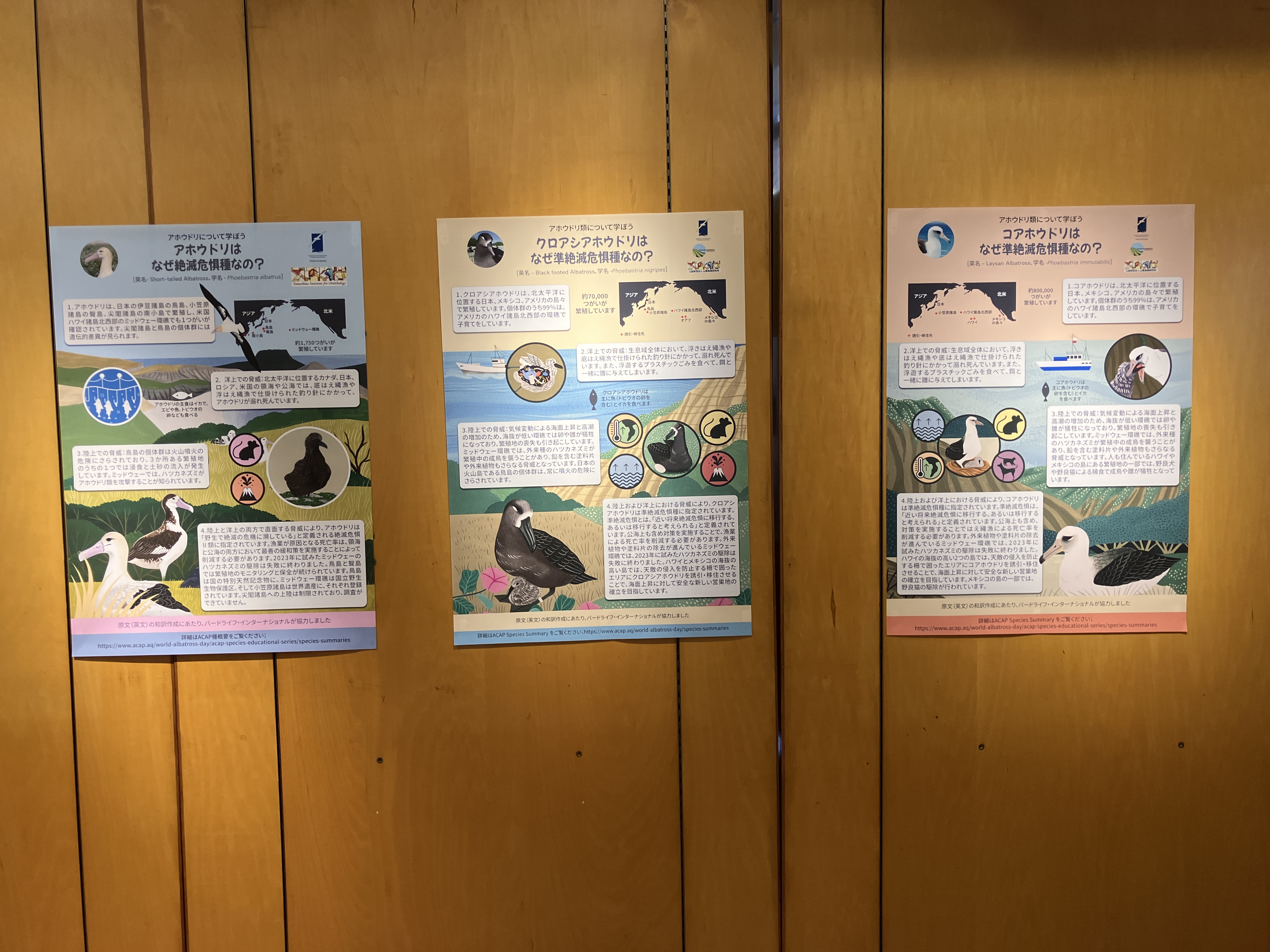 Southern Buller's Albatrosses on The Snares by Flávia F. Barreto of Artists & Biologists Unite for Nature (ABUN) for World Albatross Day 2024, after a photograph by Dominique Filippi
Southern Buller's Albatrosses on The Snares by Flávia F. Barreto of Artists & Biologists Unite for Nature (ABUN) for World Albatross Day 2024, after a photograph by Dominique Filippi
Paul Sagar (Parker Conservation, Karitane, New Zealand) and colleagues have produced a final report for the Conservation Services Programme of the New Zealand Department of Conservation that details research carried out on Near Threatened Southern Buller’s Albatrosses Thalassarche b. bulleri on The Snares Islands in the the 2024/25 austral summer.
The report’s summary follows:
“This report presents a summary of the results of demographic studies at three study colonies of southern Buller’s albatrosses Thalassarche bulleri bulleri breeding at Tini Heke | The Snares from 12 to 22 January and 10 to 15 April 2025. Demographic studies at the three study colonies on North East Island, The Snares, have been undertaken annually 1992–2025, with the exception of 2018 and 2021. Estimates of the numbers of breeding pairs, made by recording the contents of each nest mound, increased in all three study colonies compared to 2024, but numbers remain below the levels recorded since 2010. With the assumption that the combined total number of breeding pairs in the three study colonies was representative of North East Island as a whole, then the breeding population probably peaked in 2005–2006 and has since undergone marked annual variations, with a general decrease since 2010.
A total of 278 birds that had been banded previously in the study colonies as breeding adults of unknown age were recaptured. A further 51 breeding birds were banded in the study colonies - these are presumed to be first-time breeders. The estimate of adult survival in 2024 was 0.85, one of the lowest recorded during the 33 years of this study. During the period 1992–2004 all chicks that survived to near-fledging in the study colonies were banded and their survival to return to the study colonies in subsequent years has been monitored. This year, 69 of these birds were recaptured, with birds from cohorts banded from 2000 and 2004 recorded as breeding for the first time. This demonstrates the long-term monitoring required to obtain reliable estimates of survival of such known-age birds. In addition, two birds that had been banded as near-fledging in the study colonies during Sep 2013 and Sep 2014 were also recaptured for the first time.
Alphanumeric darvic [=plastic] bands were leg mounted on 418 newly banded birds or recaptured birds. Four of these have since been sighted at sea – three at the Otago Canyons and one off Bruny Island, Tasmania.
During January 2025, 20 Druid satellite-transmitting trackers were deployed on breeding Buller’s albatrosses to follow year-round at-sea distributions. In addition, Global Location Sensing (GLS) light-based geolocators and IgotU Global Positioning System (GPS) data loggers were deployed on eight breeding Buller’s albatrosses to investigate at-sea distribution patterns. These deployments were short-term, and devices were recovered from six of these birds during the April trip.
In April 2024 26 GLS tags were deployed on breeding birds at the Mollymawk Bay study colony; 15 of these were retrieved during April 2025. A further 10 Druid trackers were deployed on non-breeding Buller’s in April 2025.
SD cards and batteries were replaced in 16 nest cameras deployed at breeding colonies on The Snares and set to record one photograph every hour of nesting Buller’s albatrosses during daylight for a further year.”
Reference:
Sagar, P., Rexer-Huber, K., Schultz, H., Simister, K., Thompson, D. & Parker, G. 2025. Population studies of southern Buller’s albatrosses at Tini Heke | The Snares Islands 2025. Final report to the Department of Conservation, Conservation Services Programme. Karitane: Parker Conservation. 18 pp.
John Cooper, Emeritus Information Officer, Agreement on the Conservation of Albatrosses and Petrels, 14 August 2025

 English
English  Français
Français  Español
Español 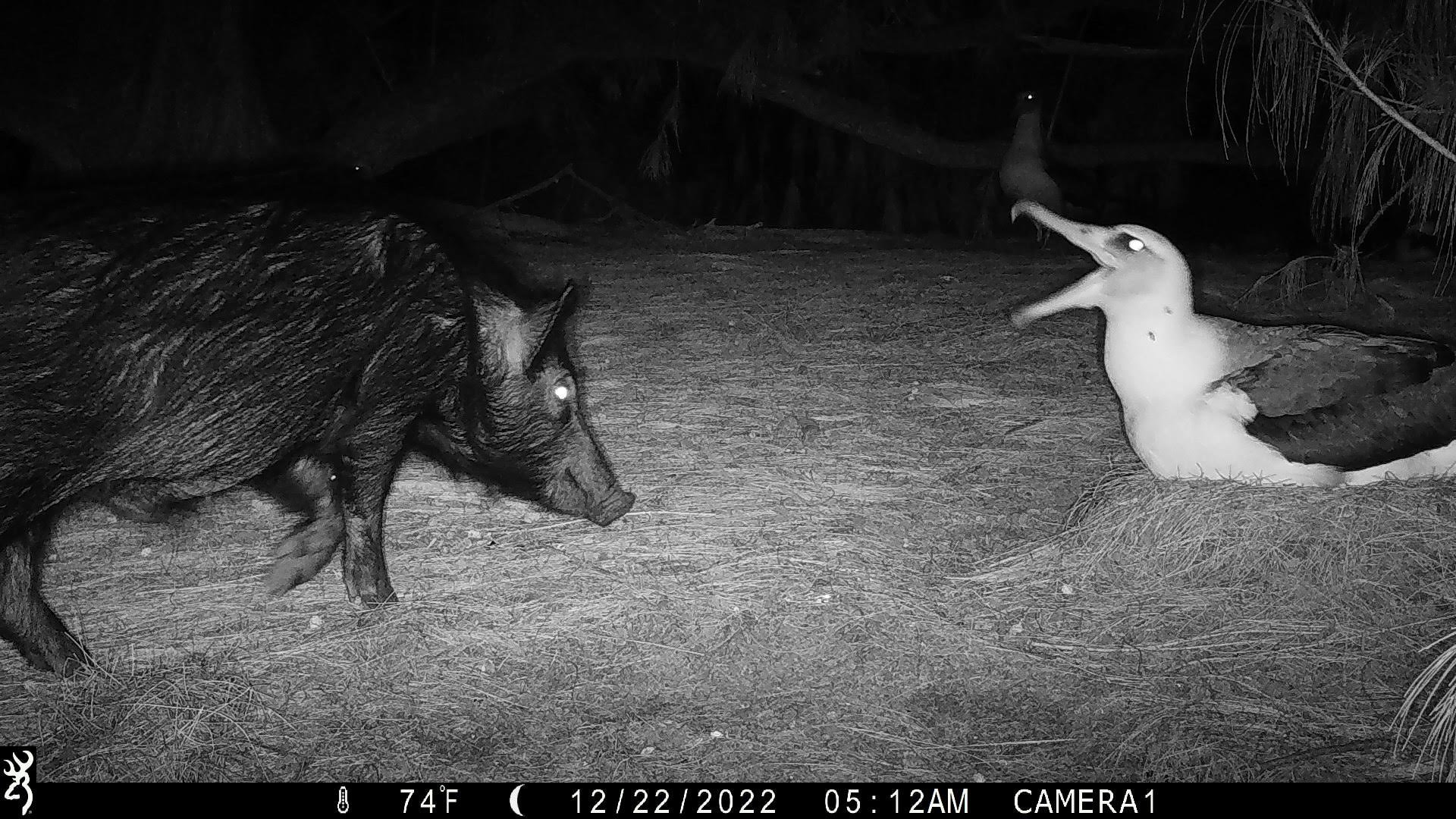 A feral pig approaches an incubating Laysan Albatross in the Kilauea Point National Wildlife Refuge
A feral pig approaches an incubating Laysan Albatross in the Kilauea Point National Wildlife Refuge

 An Antipodean Albatross breeding pair on Antipodes Island, photograph by Erica Sommer
An Antipodean Albatross breeding pair on Antipodes Island, photograph by Erica Sommer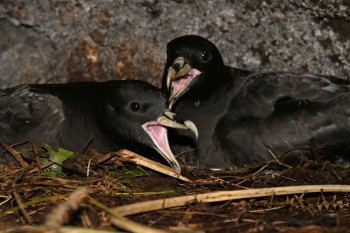

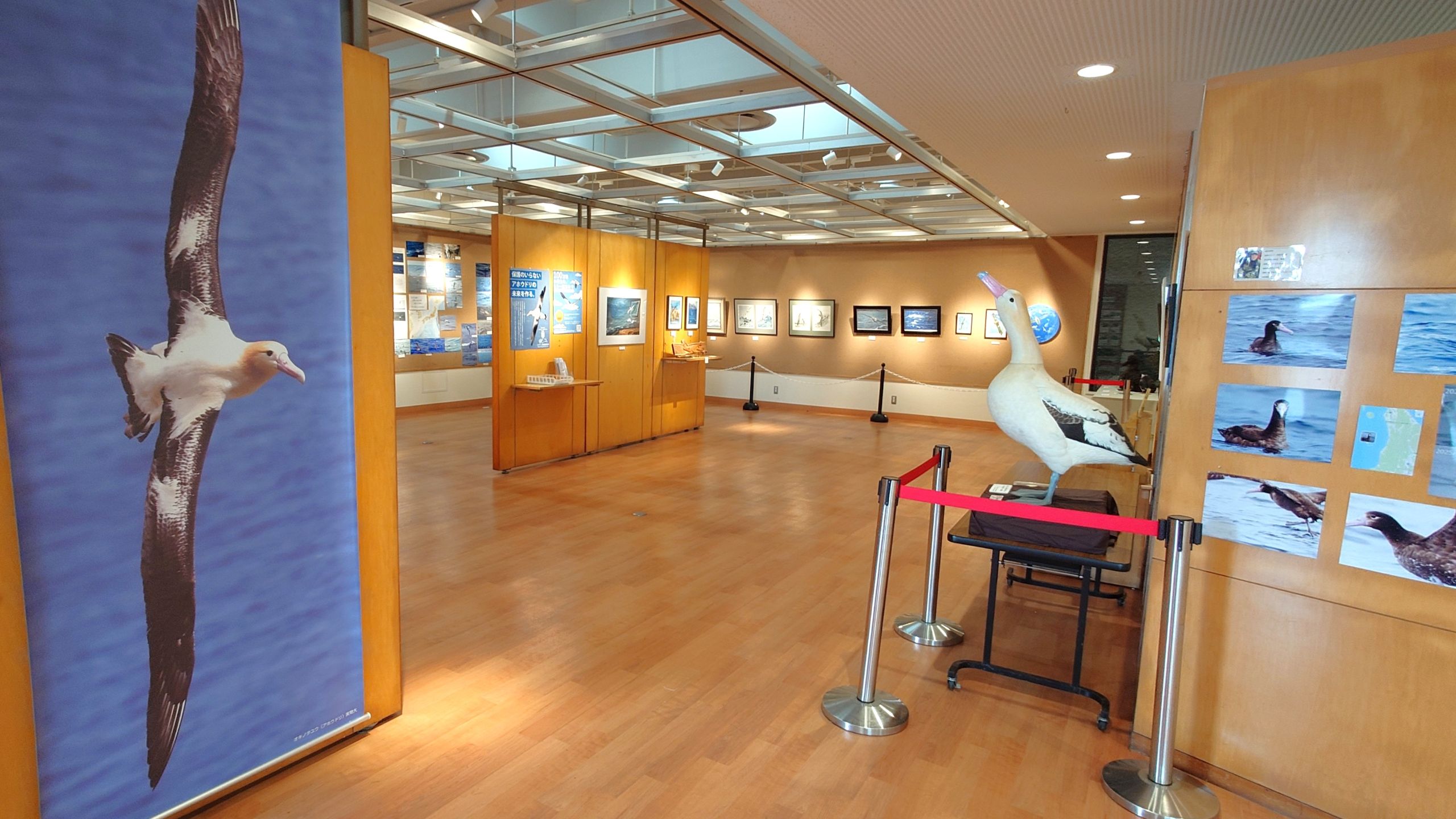 A view of Japan's World Albatross Day 2025 exhibition in the Nature Centre of the Tokyo Port Wild Bird Park
A view of Japan's World Albatross Day 2025 exhibition in the Nature Centre of the Tokyo Port Wild Bird Park
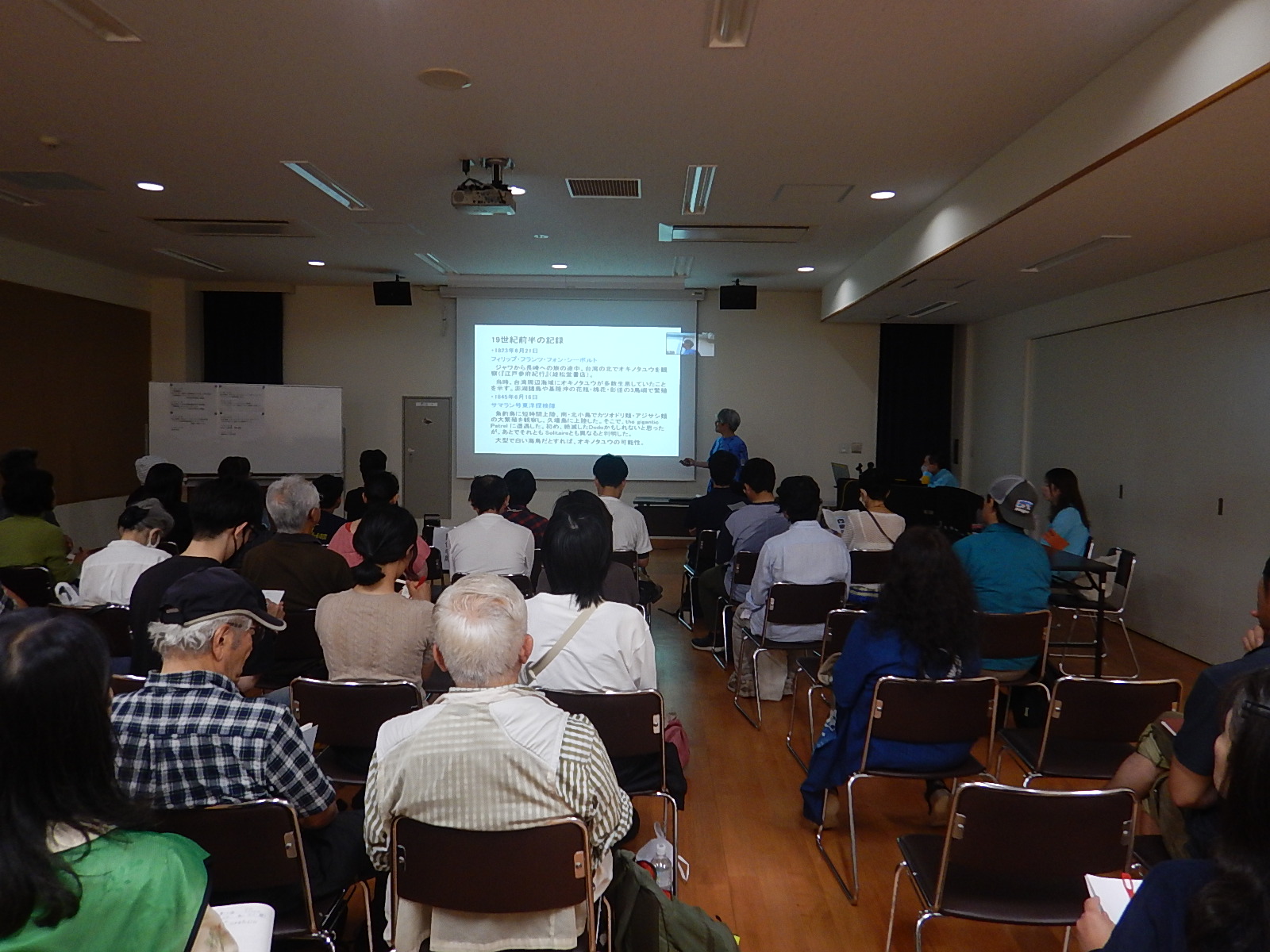 Hiroshi Hasegawa lectures on the Short-tailed Albatross
Hiroshi Hasegawa lectures on the Short-tailed Albatross